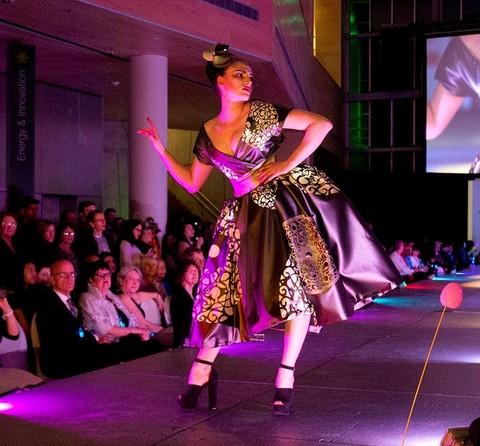Lasers for Learning: Cutting-Edge Fashion Design

Monday, October 15, 2018
With the ability to create intricate cutwork to enhance the décolletage of a gown, or scalloped lace edges that flatter the hemline of a sundress, laser cutters are rapidly becoming more popular in the realm of fashion design. They help designers bring their most creative work to life, thanks to their ability to effortlessly and precisely cut a pattern or engrave directly on to fabrics. Laser cutting is both extremely accurate and fast — important features for designers wanting to incorporate fine detail onto a variety of fabrics. Speed is also a plus in a fashion design classroom, where students may be simultaneously working on creating multiple projects.
Students will likely be interested in understanding how the laser process works, and why it doesn’t pull or stretch fabric the way cutting blades can. There are several advantages to fabric laser cutting.
- A very fine and powerful V-shaped beam of light is projected onto a tiny area in order to make the cut.
- The intensified 0.004 in beam cuts without pressure — there is no mechanical contact — so fabric isn’t distorted.
- An intensified vacuum force is automatically applied to the area being cut to prevent the material from shifting.
- Cuts are made quickly and accurately, so edges are sharp and clean.
- The laser heat seals, or cauterizes, the edges of the cuts; this protects them from fraying or raveling. (One caveat: the laser’s sealing action can be a disadvantage for cutting multiple pieces or plies at once, as it may fuse edges together.)
Many types of natural and synthetic materials can be cut or engraved with lasers, which affords more creative choice for designers. Possibilities include cotton, denim, felt, fleece, leather, linen, polyester and silk; specialty materials such as stretch fabrics and Gore-Tex are also well-suited for laser use.
Designers such as Alexander McQueen and Zac Posen, as well as brands like Marchesa, have used laser technology to create dramatic effects. Studying their work can serve as foundation for a fashion design curriculum that is highly inspiring.
Given all these factors, it’s easy to see how the laser’s presence in a fashion design classroom can greatly enhance a student’s ability to turn his or her inspired ideas into reality.
Source: www.epiloglaser.com[/vc_column_text][/vc_column][/vc_row]









 This content was provided by Epilog Laser. In business since 1988, Epilog Laser has worked hard to become the leader in the laser engraving, cutting and marking industry. We are innovators. We are problem solvers. We are committed to designing and manufacturing the highest-quality laser systems, right here in our Golden, CO headquarters.
This content was provided by Epilog Laser. In business since 1988, Epilog Laser has worked hard to become the leader in the laser engraving, cutting and marking industry. We are innovators. We are problem solvers. We are committed to designing and manufacturing the highest-quality laser systems, right here in our Golden, CO headquarters.








